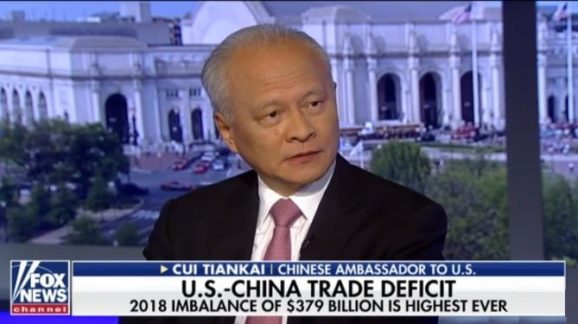Phase One of a China-U.S. Trade Agreement and the Ratchet Effect

As of Friday, December 13th, the U.S. and Chinese governments have agreed in principle to phase one of a trade agreement. The Chinese government will purchase more U.S. agricultural products, and according to The Wall Street Journal, “Mr. Wang [China’s Vice Minister of Commerce] said that the agreement would cover a range of contentious issues, including agriculture, intellectual property protection, technology transfer and liberalization of the financial sector, without elaborating.” The U.S. will hold off on a planned tariff increase set for Sunday, December 15th. It will also decrease tariffs on $120 billion of Chinese goods from 15 percent to 7.5 percent.
Details are still sketchy at this point, and are subject to change. The agreement also needs to be formally ratified by both countries. It is unclear how long this would take. President Trump also has a history backing out of already-announced major policy changes, and might do so again at any time. This might partially explain Beijing’s muted tone, and why they did not announce such a significant deal until after Beijing’s markets closed. A sudden gain on Friday’s news could be wiped out, or worse, on Monday if Trump backs out over the weekend.
But for the sake of argument, suppose phase one is ratified smoothly. Where would U.S.-China trade stand? It would still be worse off than just a few years ago. Both countries’ trade barriers would remain higher than before the trade war started. The trade war is a fresh example of the “ratchet effect” Robert Higgs warned about in his classic book Crisis and Leviathan. A crisis results in expanded government power, which is never fully walked back. Post-crisis leviathan remains larger on net.
In this case, a fabricated crisis over Trump’s misunderstanding of trade deficits has created a new trade leviathan. If it is ever tamed, it will take years. Both U.S. political parties are taking a populist turn. Chinese President Xi Jinping has spent six years consistently re-centralizing China’s economy and rejecting needed economic and political liberalization. Tariffs from the U.S. are clearly not encouraging better behavior. In this political climate, two years of trade mistakes might take a generation to fix, or longer. Both countries would be better off if they had never fought a trade war in the first place.
Many of China’s promised phase one reforms are vague, and difficult or impossible to measure. It is also unclear what will happen to China’s retaliatory tariff increases, which are penalizing U.S. exporters even as China has lowered its tariffs against the rest of the world over the last two years. The ratchet will remain tighter than before the trade war. It is just a question now of how much tighter.
The story is similar for the U.S., which will keep in place 25 percent tariffs against $250 billion worth of Chinese goods that did not exist two years ago. Those still-new tariffs will keep consumer prices artificially high after phase one passes. Companies in all manner of industries will still be scrambling for ways to adapt to suddenly higher costs and disrupted supply chains.
Businesses in both countries are having to make important long-run decisions right now with no idea of what’s to come next. This is bad for investment, and one reason the risk of recession in the U.S. remains uncomfortably high despite an otherwise-excellent economy.
President Trump has said that phase two negotiations will begin immediately, but there is no indication yet what his goals are for phase two, what its timetable will be, how many phases there will be, or what Trump’s ultimate policy goals are. These will be Trump’s problems for at most another five years. Most businesses hope to be around for rather longer than that, and would like to be able to plan accordingly.